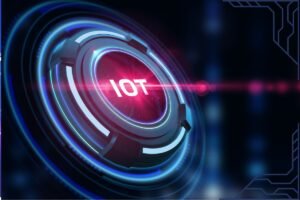The IoT Architecture
Introduction
The architecture of IoT (Internet of Things) lays the foundation for the seamless integration of devices, sensors, and networks, revolutionizing industries and enhancing daily lives. Let’s unravel the complexities of IoT architecture and understand its significance in today’s interconnected world.

Understanding IoT Components
IoT architecture comprises interconnected components that facilitate communication, data processing, and decision-making. From sensors and actuators to gateways and cloud platforms, each element plays a crucial role in enabling the flow of data and information across the IoT ecosystem.
Sensors and Actuators
Sensors capture real-world data, such as temperature, humidity, and motion, while actuators initiate actions based on received instructions. These devices form the sensory layer of IoT architecture, providing crucial input for decision-making processes.
Gateways
Gateways serve as intermediaries between IoT devices and the cloud, aggregating data from multiple sources and facilitating secure communication. They play a vital role in ensuring connectivity, scalability, and interoperability within IoT networks.
Cloud Platforms
Cloud platforms provide the computational power and storage infrastructure required for processing vast amounts of IoT data. Leveraging cloud services, organizations can analyze data in real-time, extract valuable insights, and deploy scalable IoT applications.
Functionalities of IoT Architecture
IoT architecture offers a diverse range of functionalities, enabling seamless connectivity, data management, and application development. Let’s explore some key functionalities that define the architecture of IoT.
Connectivity
Connectivity forms the backbone of IoT architecture, enabling communication between devices, networks, and cloud services. Technologies such as Wi-Fi, Bluetooth, and cellular networks facilitate data transmission across various IoT components.
Data Management
Effective data management is essential for harnessing the full potential of IoT architecture. From data acquisition and storage to processing and analytics, IoT platforms ensure the efficient management of diverse data sources, enabling informed decision-making and predictive insights.
Security and Privacy
Security is a paramount concern in IoT architecture, given the proliferation of connected devices and the potential risks associated with data breaches and cyber-attacks. Robust security mechanisms, including encryption, authentication, and access control, safeguard IoT ecosystems against threats and vulnerabilities.
Real-World Applications of IoT Architecture

The versatility of IoT architecture has paved the way for innovative applications across industries, transforming business processes, enhancing efficiency, and improving quality of life. Let’s explore some compelling use cases that highlight the diverse applications of IoT architecture.
Smart Home Automation
In the realm of smart home automation, IoT architecture enables the seamless integration of devices such as thermostats, lighting systems, and security cameras. By connecting these devices to a centralized hub, homeowners can remotely monitor and control various aspects of their living environment, enhancing convenience, comfort, and energy efficiency.
Industrial IoT (IoT)
In industrial settings, IoT architecture facilitates the implementation of smart manufacturing systems, predictive maintenance solutions, and asset tracking technologies. By leveraging IoT sensors and analytics platforms, organizations can optimize production processes, reduce downtime, and enhance overall operational efficiency.
Healthcare Monitoring
IoT architecture plays a crucial role in revolutionizing healthcare delivery through remote patient monitoring, wearable devices, and telemedicine solutions. By continuously collecting and analyzing patient data, healthcare providers can offer personalized treatment plans, improve diagnostic accuracy, and enhance patient outcomes.
Conclusion
The architecture of IoT represents a fundamental framework for building interconnected ecosystems that drive innovation, efficiency, and sustainability across various domains. By understanding the intricacies of IoT architecture and its real-world applications, we can harness the transformative power of IoT to create smarter, more connected environments for the future.
FAQs
- What is IoT architecture? IoT architecture refers to the framework of interconnected components and protocols that enable the seamless integration of devices, sensors, and networks, facilitating communication, data processing, and decision-making in IoT ecosystems.
- How does IoT architecture facilitate connectivity? IoT architecture leverages various connectivity technologies such as Wi-Fi, Bluetooth, and cellular networks to enable communication between IoT devices, gateways, and cloud platforms, ensuring seamless data transmission and interoperability.
- What are the key functionalities of IoT architecture? Key functionalities of IoT architecture include connectivity, data management, security, and privacy. These functionalities enable the efficient integration, processing, and analysis of data within IoT ecosystems, driving innovation and enhancing user experiences.
- What are some real-world applications of IoT architecture? Real-world applications of IoT architecture span across industries, including smart home automation, industrial IoT (IIoT), healthcare monitoring, and smart city initiatives. These applications leverage IoT technology to streamline processes, improve efficiency, and enhance quality of life.
- How does IoT architecture ensure security and privacy? IoT architecture incorporates robust security mechanisms such as encryption, authentication, and access control to safeguard data integrity and privacy within IoT ecosystems. These measures mitigate the risks of cyber-attacks and unauthorized access, ensuring the secure operation of IoT devices and services.
- How can organizations leverage IoT architecture for innovation? Organizations can leverage IoT architecture to drive innovation by harnessing the power of real-time data analytics, predictive insights, and automation. By integrating IoT technology into their operations, businesses can optimize processes, reduce costs, and gain a competitive edge in the market.
